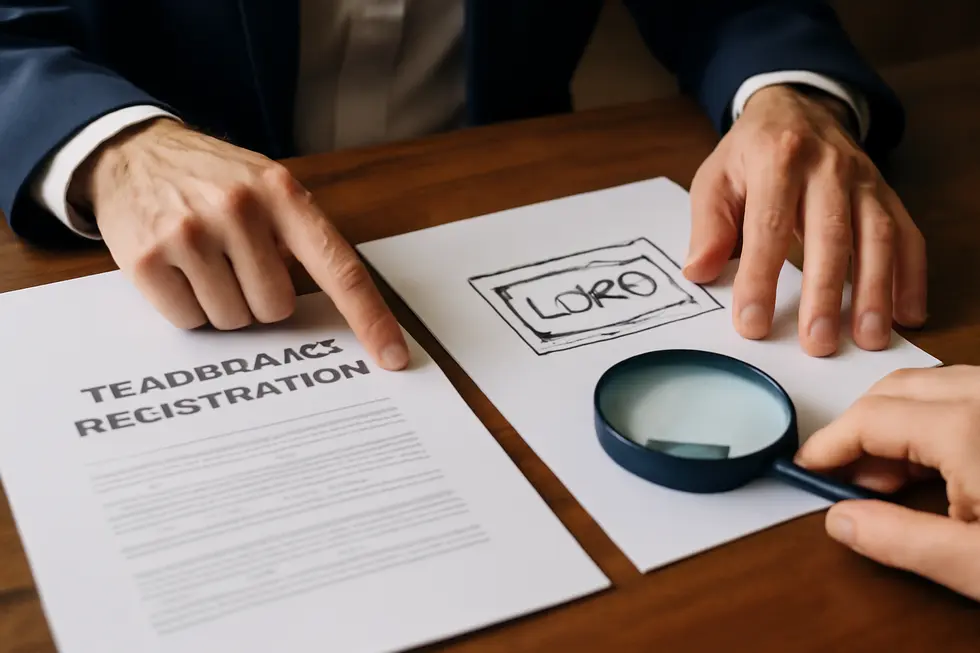Introdução
Selecting the right company name is a crucial step for business owners, but what happens if the name you want already exists? This question carries significant legal and practical weight, as company registration authorities and trademark laws work diligently to prevent confusion and protect brand identity. Understanding corporate registration rules helps clarify whether you can legally register a name identical or similar to existing ones within your jurisdiction. Equally important are the implications of trademark law, which safeguards brand names beyond mere registration. Industry classifications and geographic factors also influence name usage rights and the potential for overlap. Further, the legal consequences of using a name that conflicts with another business can be costly and damaging. Finally, adopting best practices ensures your company name selection is compliant and strategically sound. By exploring these aspects in detail, you will gain a comprehensive understanding needed to make informed decisions about your company’s name.
Tabelas de conteúdos
Chapter 1: Understanding Corporate Registration Rules and Can I Use a Company Name That Already Exists
- Navigating Corporate Registration: Legal Boundaries and Compliance for Company Name Use
- Navigating Name Reservation and Approval: How Corporate Registries Control Duplicate Company Names
- Navigating the Legal Risks and Consequences of Using an Existing Company Name
Chapter 2: Trademark Law Implications on Can I Use a Company Name That Already Exists
- Navigating Trademark Principles: How Legal Protections Shape Company Name Usage
- Navigating Trademark Risks: Legal Consequences of Using an Existing Company Name
- Navigating Trademark Barriers: Effective Strategies for Choosing a Unique and Compliant Company Name
Chapter 3: Industry and Geographic Considerations When Can I Use a Company Name That Already Exists
- How Industry and Location Shape Legal Boundaries on Reusing Existing Company Names
- Navigating Geographic Jurisdiction and Market Reach in Choosing a Company Name
- Navigating Competitive Risks and Economic Impact of Using Duplicate Company Names Across Industries and Regions
Chapter 4: Legal Consequences of Using Can I Use a Company Name That Already Exists
- Navigating Trademark Risks and Legal Fallout from Using an Existing Company Name
- Navigating Litigation Risks and Financial Penalties for Using an Existing Company Name
- Eroding Trust: How Using Existing Company Names Harms Your Business Reputation
Chapter 5: Best Practices for Can I Use a Company Name That Already Exists to Ensure Compliance
- Navigating Legal Boundaries and Best Practices When Using an Existing Company Name
- Navigating Procedural Steps and Strategic Best Practices to Secure a Compliant Company Name
- Navigating Economic and Societal Impact When Using Existing Company Names
Chapter 1: Understanding Corporate Registration Rules and Can I Use a Company Name That Already Exists

1. Navigating Corporate Registration: Legal Boundaries and Compliance for Company Name Use
When choosing a company name, understanding corporate registration rules is crucial to avoid legal conflicts. Business registries enforce regulations that prohibit registering identical or deceptively similar names within the same jurisdiction and industry. These safeguards aim to prevent consumer confusion and protect existing enterprises. Beyond registry rules, trademark law plays a significant role—if a name is trademarked for specific goods or services, using it without authorization may constitute infringement, even if the company name is otherwise available. Geographic and industry distinctions matter; names used in different markets or unrelated sectors may be permissible, but this depends on the likelihood of public confusion. Violating these legal boundaries can lead to costly demands to change the name, legal penalties, or damage to reputation. Therefore, conducting thorough searches in corporate registries and trademark databases, coupled with seeking legal advice, forms an essential compliance strategy. For deeper insights on protecting your brand identity, consider exploring how trademarks prevent others. Successfully navigating these rules ensures a solid foundation for your business identity and legal security.
2. Navigating Name Reservation and Approval: How Corporate Registries Control Duplicate Company Names
When registering a company name, navigating the official name reservation and approval process is essential to avoid conflicts. Corporate registries typically require applicants to submit a proposed name which undergoes a review to ensure it is not identical or confusingly similar to existing names within that jurisdiction. This review prevents consumer confusion and protects business identities by enforcing unique naming standards. The process often begins with a preliminary name availability check, which applicants should perform to identify potential conflicts early. Once submitted, the registrar assesses the name against its database, scrutinizing spelling, phonetics, and associated industries to determine similarity. If the name passes this scrutiny, it is reserved for a limited period, allowing the registrant to complete the registration formalities. However, if the name is unavailable or deemed too similar, the registry will reject the application, prompting the need to select an alternative name. Since rules vary internationally and by industry, consulting the relevant registry and considering trademark searches are prudent steps. This layered approach is crucial because company registration alone does not guarantee trademark protection—making the combined process of name reservation and legal clearance critical for a successful and undisputed company identity. For more insight on protecting your business name, visit this detailed resource on legally protecting your brand.
3. Navigating the Legal Risks and Consequences of Using an Existing Company Name
Using a company name that already exists can expose a business owner to significant legal and financial risks. Corporate registries typically prohibit registering a name identical or confusingly similar to one already on record within the same jurisdiction and industry. This is to prevent consumer confusion and protect established business identities. Beyond registration, trademark law further restricts name use when a company holds trademark rights. Even if a name is available in a corporate registry, its trademark status could prevent lawful use, as infringement may result in costly cease-and-desist orders or lawsuits demanding damages and rebranding efforts. Consequences of ignoring these rules include forced name changes, reputational damage, and financial losses from legal disputes. Moreover, geographic and industry differences may sometimes allow identical names but only when confusion is unlikely. To avoid these pitfalls, thorough checks of corporate databases and trademark registers are necessary before finalizing a name. Consulting legal professionals is crucial to ensure compliant and risk-free company naming. Learn more about how trademark protections safeguard business identities in the detailed guide on marcas registadas legalmente protegidas.
Chapter 2: Trademark Law Implications on Can I Use a Company Name That Already Exists

1. Navigating Trademark Principles: How Legal Protections Shape Company Name Usage
Trademark law plays a critical role in determining whether you can use a company name that already exists, especially when protecting consumer recognition and preventing unfair competition. Trademarks safeguard unique identifiers—such as business names, logos, and slogans—that distinguish one company’s goods or services from another’s. When a company registers a trademark, it gains exclusive rights within specific classes of goods or services, meaning another business cannot legally adopt a confusingly similar name within those categories. This exclusivity helps avoid consumer confusion and safeguards brand value.
While corporate registration databases prevent identical names from coexisting within the same jurisdiction, trademark protections extend beyond just registration and depend on actual use and reputation in commerce. Even without formal registration, a company might enforce “common law” rights if it has established market recognition. Importantly, trademark protection is often limited to particular industries and geographical areas, allowing identical names in unrelated sectors or distant regions under some circumstances. However, using a name infringing on an existing trademark risks legal action, including injunctions and damages.
Given these complexities, understanding trademark protections and conducting comprehensive name searches are vital steps in choosing a company name, as explained in more detail in resources on marcas registadas legalmente protegidas.
2. Navigating Trademark Risks: Legal Consequences of Using an Existing Company Name
Using a company name that matches or closely resembles an existing trademarked brand poses significant legal risks. Trademark law protects names that distinguish products or services in commerce, guarding against consumer confusion and brand dilution. When a business adopts a name already trademarked within the same industry or related class, it can trigger infringement claims leading to costly legal disputes. Courts often assess the likelihood of confusion among consumers, considering factors such as the similarity of names, trademark distinctiveness, and market overlap. Consequences of infringement include injunctions forcing a business to cease name use, monetary damages, and reputational harm. Moreover, even if the name is registered with a corporate registry, trademark owners can still pursue action if their mark was established first and is protected federally or regionally. Navigating these risks requires thorough trademark searches and legal consultation prior to selecting a company name to avoid infringement. This proactive due diligence helps safeguard a business’s brand integrity, ensuring compliance with intellectual property law and minimizing exposure to disruptive legal challenges. For more details on protecting business identities, see marca registada legalmente protegida.
3. Navigating Trademark Barriers: Effective Strategies for Choosing a Unique and Compliant Company Name
Choosing a company name that avoids trademark infringement begins with comprehensive research beyond corporate registries. Trademark law protects names that identify the source of goods or services, so even if a company name is available at registration, it might still infringe an existing trademark. To ensure compliance, one must perform thorough trademark searches within relevant trademark databases covering all applicable classes of goods and services. Even similar or deceptively close names can trigger legal disputes if they cause consumer confusion. Strategically, selecting a name that is distinctive, non-generic, and unrelated to existing trademarks reduces risks. Consider the geographic scope and industry to evaluate potential overlap carefully. Consulting with a trademark professional helps interpret search results and guides proper clearance. Additionally, registering the chosen name as a trademark strengthens legal protection, preventing others from adopting confusingly similar marks. These proactive steps shield businesses from costly litigation and forced rebranding. For deeper insights into safeguarding your brand, explore this guide on marca registada legalmente protegida.
Chapter 3: Industry and Geographic Considerations When Can I Use a Company Name That Already Exists

1. How Industry and Location Shape Legal Boundaries on Reusing Existing Company Names
When determining whether you can legally use a company name already registered, industry classification and geographic scope play critical roles. Company name protections primarily guard against consumer confusion within the same sector and market. For example, if two businesses operate in vastly different industries—such as software development versus landscaping—the risk of name conflict diminishes significantly. Similarly, geographic separation can allow identical or similar names to coexist if their markets do not overlap. However, these distinctions are not absolute. Trademark law often extends beyond mere industry boundaries and can restrict name use across different sectors if the name carries strong brand recognition or distinctiveness. The level of protection also depends on how broadly the trademark rights are registered and enforced in specific regions or countries. Many jurisdictions require companies to perform thorough searches in both corporate registries and trademark databases before adopting a name, ensuring no infringement on industry-specific or regional naming rights occurs. This intersection of industry and geography underscores the importance of understanding local and sectoral naming policies to avoid costly disputes. For deeper insights on trademark protections related to business names, consult this detailed guide on marcas registadas legalmente protegidas.
2. Navigating Geographic Jurisdiction and Market Reach in Choosing a Company Name
When deciding if you can use a company name that already exists, geographic jurisdiction e market reach play crucial roles. Company registries and trademark offices enforce naming rules based on the location where the business operates or intends to operate. For example, a name legally registered in one country or state might be available for use in another if no conflicting rights exist. This is because most regulatory bodies prevent identical or similar company names only within their own jurisdiction to avoid consumer confusion locally.
However, market reach complicates this. Even if the company name exists in a different area, similarity in industry combined with overlapping customer bases could trigger legal challenges for trademark infringement or unfair competition. If a company’s trademark rights extend across regions through registrations or use, using the same or confusingly similar name can lead to costly disputes.
Thus, understanding both the geographic scope of your business and the existing company’s market presence is essential. Conducting thorough searches in relevant registries and trademark databases aligned with your intended markets helps prevent conflicts. For deeper insight on protecting your brand, reviewing marca registada legalmente protegida guidelines is highly recommended.
3. Navigating Competitive Risks and Economic Impact of Using Duplicate Company Names Across Industries and Regions
Using a company name that already exists involves more than just legal compliance; it carries significant economic and competitive implications. When companies share identical or similar names within the same industry, consumer confusion tends to rise, diluting brand identity and potentially diverting business. This confusion impacts market competition by unfairly benefiting one party at the expense of another, especially if the original company has established goodwill. Geographically, the risk lessens if businesses operate in distinct markets without overlap, making identical names less problematic. However, globalization and online commerce blur these boundaries, elevating the chances of brand dilution and damaging competitive advantage. Economically, resolving name disputes can impose costly legal battles and force costly rebranding efforts, which may disrupt operations and reputations. Thus, understanding industry-specific dynamics and regional market reach is crucial before adopting a name similar to an existing one. Proactive measures like thorough trademark searches and consulting trademark protection experts—for example, those detailed in this guide on legally protected brand trademarks—help mitigate risks by ensuring a company’s name stands distinct in both economic and competitive landscapes.
Chapter 4: Legal Consequences of Using Can I Use a Company Name That Already Exists

1. Navigating Trademark Risks and Legal Fallout from Using an Existing Company Name
Using a company name that already exists can expose a business owner to serious trademark infringement risks and related legal consequences. Trademarks protect a brand’s identity by preventing others from using confusingly similar names or marks within the same industry or marketplace. When a company name duplicates or closely resembles a registered trademark, courts assess the likelihood of consumer confusion—whether customers might mistakenly believe the two entities are connected. The stronger and more distinctive the original trademark, the broader the protection it receives, making infringement claims more likely to succeed.
Legal repercussions typically include injunctions to stop the infringing use and monetary damages to compensate the trademark owner. In some cases, courts may require the removal or destruction of infringing materials and award profits gained through unauthorized use. Beyond civil penalties, intentional infringement can trigger criminal sanctions in specific jurisdictions, emphasizing the importance of careful name selection.
To minimize risk, thorough searches of trademark databases and corporate registries should be conducted before adopting a name. Consulting legal professionals on trademark laws can prevent costly disputes and help build a unique, defensible brand identity. For detailed guidance on protecting business names and trademarks, see this resource on marcas registadas legalmente protegidas.
2. Navigating Litigation Risks and Financial Penalties for Using an Existing Company Name
Using a company name that already exists can trigger serious litigation risks and heavy financial penalties. Legal disputes often arise when a business name infringes on the trademark rights or is deceptively similar to an existing registered company. This similarity can mislead consumers and damage the original company’s brand reputation. Courts typically take a strict stance on protecting trademarks and registered business names, viewing intentional or negligent infringement as grounds for cease-and-desist orders, costly lawsuits, and mandatory name changes. Financial consequences may include damages for lost profits, reimbursement of attorney fees, and statutory penalties, which can severely impact a company’s resources and long-term viability. Beyond monetary loss, businesses face reputational harm that can undermine customer trust and market position. To minimize these risks, thorough searches of corporate and trademark databases are crucial before registering a company name. Legal guidance is also essential to ensure compliance and avoid costly disputes. For a deeper understanding of brand protection strategies, explore this comprehensive guide on marcas registadas legalmente protegidas.
3. Eroding Trust: How Using Existing Company Names Harms Your Business Reputation
Selecting a company name already in use can have far-reaching consequences beyond legal penalties. Consumer trust is fragile, and customers may associate a new company sharing an established name with poor service, legal disputes, or unethical behavior linked to the original business. This mistaken identity risks irreparable brand damage, as confusion dilutes unique brand recognition and loyalty. Furthermore, competitors and partners may view name conflicts as signs of unprofessionalism or lack of due diligence, undermining opportunities for collaboration and growth. Negative associations can spread rapidly through social media and reviews, amplifying reputational harm. Even if legal challenges are avoided, the loss of distinct market presence often translates to diminished customer confidence and sales. Therefore, thoroughly researching existing trademarks and company registrations is essential. Protecting your brand from confusion and infringement safeguards not only compliance but also the invaluable asset of customer trust. For a comprehensive understanding of brand protection, reviewing strategies on marcas registadas legalmente protegidas is highly recommended.
Chapter 5: Best Practices for Can I Use a Company Name That Already Exists to Ensure Compliance

1. Navigating Legal Boundaries and Best Practices When Using an Existing Company Name
When considering using a company name that already exists, understanding the intertwined legal frameworks is key to compliance. Corporate registries generally prevent the registration of identical or confusingly similar names within the same jurisdiction and industry to avoid consumer confusion. Beyond registrations, trademark law offers another layer of protection. Even if a company name is registered legally, a trademark may restrict its use in specific industries or geographic markets. Using a name without assessing trademark rights risks infringement and costly legal disputes, including cease-and-desist orders or damages. Because these protections vary by class of goods or services and geographic scope, names identical across unrelated industries or regions might be permissible. Due diligence is essential—conducting thorough business name and trademark searches helps ensure your chosen name is available and legally sound. Consulting intellectual property experts can clarify complex overlaps between company registration and trademark rights. For a deeper understanding of protecting your business identity with trademarks, explore this legally protected brand trademark resource. This proactive approach safeguards against legal conflicts and supports a strong, compliant brand foundation.
2. Navigating Procedural Steps and Strategic Best Practices to Secure a Compliant Company Name
Securing a company name already in circulation requires diligent procedural compliance to avoid infringement and registration refusal. The process begins with exhaustive searches of both national business registries and trademark databases to verify name availability and exclusivity. This research extends beyond mere corporate registries and includes domain name and social media handle checks to ensure cohesive branding. Jurisdictions universally mandate unique company names within their scope, but variations and differentiators such as adding legal suffixes or modifying spellings may allow coexistence where confusion is unlikely. Engaging legal counsel early is crucial; they assess risks related to trademark infringement and advise on negotiation strategies, such as purchasing rights or drafting coexistence agreements when similar names exist. Beyond compliance, registering trademarks fortifies brand protection, deterring potential conflicts and reinforcing legal standing. Businesses should maintain detailed documentation of all searches and correspondence to withstand potential disputes. Adhering to these integrated best practices mitigates legal risks, safeguards brand identity, and streamlines the registration process, ensuring your company’s name stands distinct and secure. For a deeper understanding of how trademark registration protects business identities, see this resource on marcas registadas legalmente protegidas.
3. Navigating Economic and Societal Impact When Using Existing Company Names
Choosing a company name that already exists carries significant economic and societal weight beyond legal compliance. Economically, duplicating or closely mimicking an existing name risks creating market confusion, which can dilute brand identity and erode customer loyalty. This mix-up may divert sales and damage reputations, imposing costly setbacks through legal disputes and forced rebranding. Additionally, while overly rigid naming restrictions can impede new businesses from distinguishing themselves, lax controls harm market transparency and consumer trust, undermining fair competition and innovation.
From a societal perspective, clear and unique company names are essential to protect consumer interests and uphold ethical market standards. Misleading naming practices can be perceived as unfair competition, eroding public confidence and transparency. Names often carry cultural or historical significance, so respecting these identities strengthens community trust. To mitigate these risks, best practices include comprehensive name and trademark searches, understanding jurisdictional nuances, and seeking legal counsel to develop distinctive, compliant branding strategies. For deeper insights on protecting your business identity, review this guide on marcas registadas legalmente protegidas.
Considerações finais
Choosing a company name already in use involves navigating complex legal frameworks designed to protect business identities and consumer clarity. By understanding corporate registration rules, business owners learn why identical or confusingly similar names are often prohibited within jurisdictions. Trademark law introduces another protective layer, guarding names as brand assets and restricting conflicted usage even beyond registration databases. Industry classification and geographic reach further refine when and where a company name can legally overlap without causing confusion or infringement. Ignoring these rules exposes businesses to serious legal risks, including lawsuits, penalties, and reputational harm. Applying best practices such as comprehensive name searches, consulting trademark databases, and seeking expert legal advice reduces the risk of costly disputes and ensures smoother brand establishment. Armed with this knowledge, business owners are better positioned to select a distinctive, compliant company name that protects their brand and supports long-term success.
Obtenha a sua marca registada hoje! Milhares de pessoas protegeram a sua marca através do registo de uma marca registada. De que está à espera? Inicie o seu pedido de registo de marca!
Sobre nós
The globe’s top website for registering trademarks and safeguarding your brand, name, logo, or slogan. We help businesses protect their identity with expert guidance, reliable filing services, and ongoing support to secure your intellectual property with ease and confidence.







